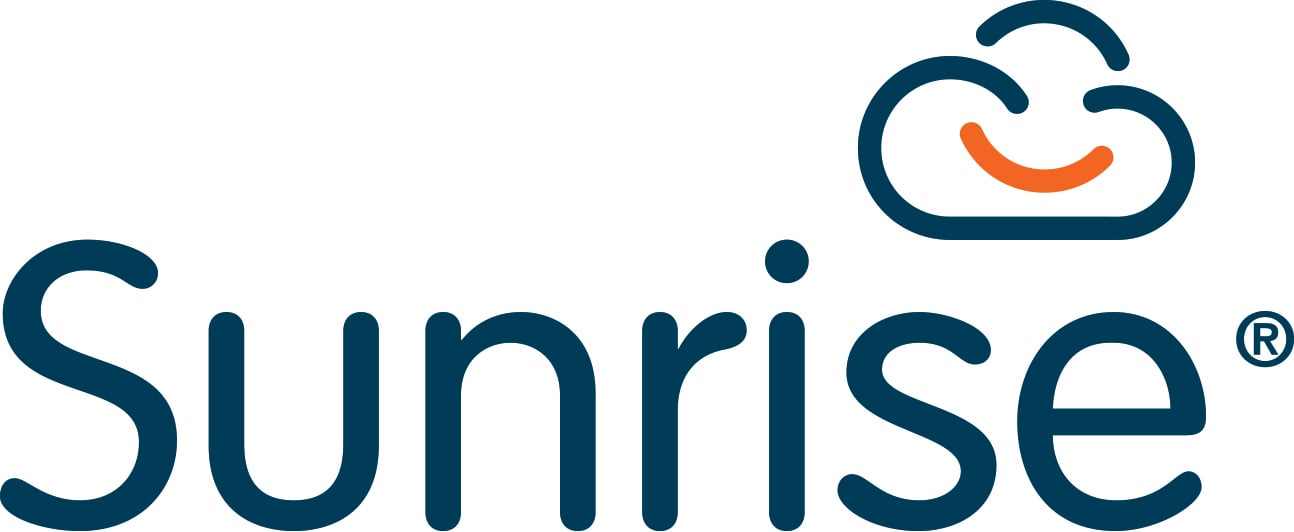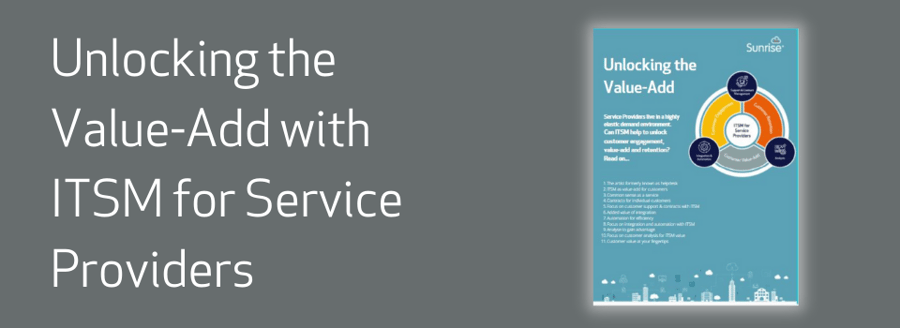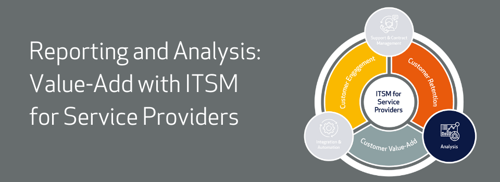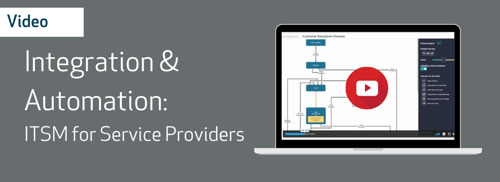In today's landscape, customer engagement and retention have become absolute game-changers for managed service providers (MSPs).
Now more than ever, it's not just about providing services – it's about building lasting relationships. In this hyper-competitive environment, MSPs understand that the key to winning and maintaining customers lies in delivering genuine value-add. It's not just a transaction; it's about consistently going the extra mile, offering solutions that truly benefit the clients, and ensuring their needs are not just met but exceeded.
In this customer-centric era, the real success story for MSPs is written by the value they bring to the table, fostering trust and loyalty that goes beyond the ordinary.
ITSM as Value-Add for Service Providers
You may assume that you can deliver customer satisfaction using a mishmash of internal tools and applications, rather than a dedicated service management platform. It’s like attempting to service a fleet of company cars using a stack of DIY manuals, rather than simply taking them to a garage that actually knows what it’s doing and understands every aspect of those vehicles. Which model would lead to a happier set of company car drivers?
Let’s then look in more detail at how ITSM can improve the success rate and efficiency of an MSP in increasing and retaining its customer base, allowing it to provide true, value-added services as a real differentiator.
Efficient Contract Management with ITSM
ITSM, such as Sunrise, consolidates all supplier and customer details into a secure, central location, tracing every element of that contract while providing a complete view of all activities.
Details such as contract start and end dates, license details, costs, special terms, the process of internal and legal review of each contract state, and termination and expiration, can all be defined and managed. This enables an MSP to track and analyse the quality of service being delivered.
ITSM provides Common Sense as a Service
It also minimises the “human error” risk by providing automated warnings of expiring contracts and recording details of contract discussions to avoid losing contracts through simple mismanagement. As part of this asset tracking, it can also optimise the costs for a customer by identifying wasted expenditure on licenses that are no longer in use.
In general, visibility across the entire service supply chain is increased, so areas for improvement or potential risks can be readily identified and resolved.
Strategic SLA Management and Real-time MonitoringFundamental to managing the customer relationship is the ability to assign SLAs on multiple levels. For example, to any element of a contract, the contract as a whole, a custom SLA for a specific customer, and then tightly monitor the performance relating to those SLAs.
The latter includes receiving live updates and allowing full information exchange, including providing the customers with the ability to use a self-service portal to monitor the state of play themselves. This means they have direct access to information such as incidents and problems they’re working on, orders for products and services they provide, projects and work orders they’re involved in, or any other element that needs attention. Regular audits can be carried out as required to ensure appropriate service delivery levels are being attained and maintained.
Integrating with customer systems
Integrating with external 3rd party systems can boost customer retention and add value as it allows for a seamless and enhanced user experience. Having the ability to readily integrate with an external system might be the difference between winning and losing a customer. Integration with common customer tools such as CRM systems brings you, the service provider, and your customer closer together and all singing from the same hymn sheet.
Sunrise supports data integration with 3rd party analysis tools, such as Microsoft’s Power BI data analytics service, for intensive drilling down into data specifics. The report engine encompasses Service Desk Institute (SDI) accredited reports – these allow you to report on a monthly basis to see how you're performing against the preset KPIs and can be reviewed internally and or shared with customers.
Less human, more automation
Integrations need to be maintained during the changes that occur daily within IT, be it applications, data, or humans. Here is where the “A” word enters the building! Over the years, few IT buzzwords have been more abused than “automation”, but within a complex chain of data and applications, managing that chain is close to impossible without it being introduced.
Sunrise has a true automation engine that can automate processes inside and outside of the Sunrise platform, so data and operations are synchronised regardless of where they exist. This doesn’t simply extend to automating the management of integration between internal and external applications and data, but in terms of the communications between the two (or more) parties. The latter includes auto alerts and emails and calendar management, for example.
On a general basis, there are obvious benefits to automating as many of the support procedures as possible, as it accelerates problem resolution, minimises human error, and allows for proactive support. It gives you, the MSP, the all-important 24×7 interaction between all the different service management elements and every customer – without human intervention.
It also helps with managing contracts. All incidents raised are directly related to their relevant, pre-defined SLA levels and escalation options so, regardless of the complexity of the chain or workflow, the synchronisation is maintained.
The bonus is that one basic automated template can provide the platform for servicing multiple customers, meaning happier users, better customer satisfaction, and better customer retention, optimal operations, increased profit generation – what’s not to like?
Analyse to gain an advantage
Having both a comprehensive and fully customisable library of report options is the final critical component in maximising customer engagement and adding value. Sunrise provides a range of different reporting options that enable service providers to create reports on historical data, real-time statistics and tailor these so that only those who need to see it, do. Confidentiality is everything in a multi-tenant scenario but, equally, each customer wants to be treated as if they are unique and prioritised and therein lies the benefits of a fully customisable reporting engine.
With Sunrise you can create dashboards specific to a customer’s core requirements, customising layouts, and access. Immediate visibility of ongoing trends is catered for with Key Performance Indicators (KPIs) and offers instant visualisation of the health of a customer service delivery across all processes. Important information, such as service status, can be published in summary or detail, on-demand, or scheduled. Again, it’s all about time-saving, increased productivity, better service delivery performance and customer management.
You can see the average response and resolution times and resulting customer satisfaction levels - vital for customer retention. Reviewing regular performance updates can show key metrics on a per-customer basis, notably performance against every customer SLA – and it’s a two-way thing; some customers are better suited to a service provider than others, so the analysis reflects the bidirectional experience, not simply the service delivery.
For a comprehensive understanding of customer value for service providers, download the ITSM as Value-Add for Service Providers eBook. This resource offers insights into enhancing customer value through ITSM for IT providers.
The article was produced with input from Steve Broadhead, Broadband-testing, technology journalist & blogger Computer Weekly / Techtarget.
Again, it’s all about optimising customer retention. And hooking new ones in the first place. And making bigger profits.
Author: Steve Broadhead, Broadband-testing, technology journalist & blogger Computer Weekly / Techtarget.




.png)
